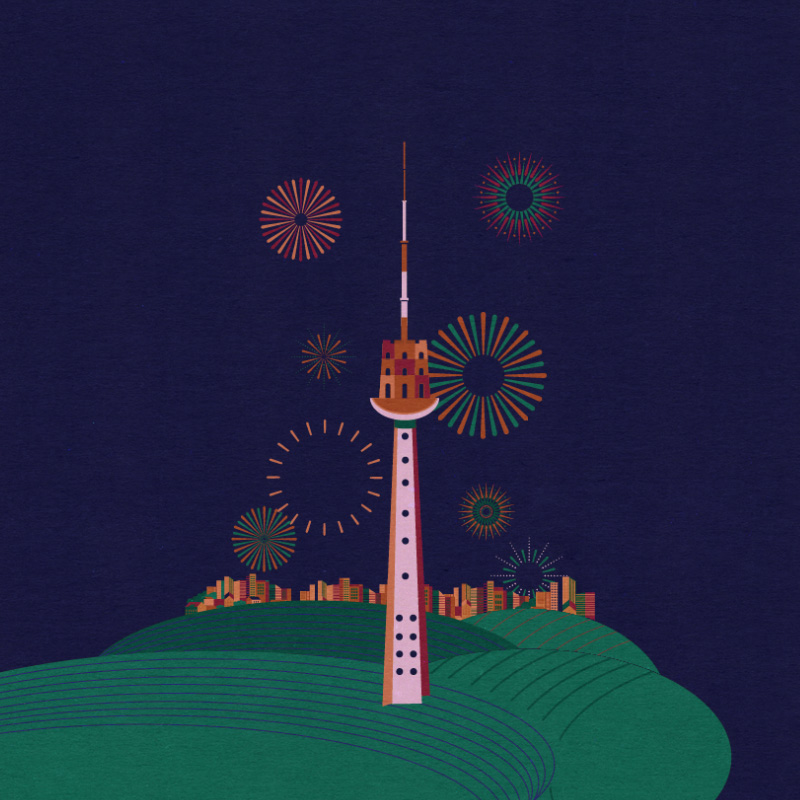Could the Baltic Sea cover the Vilnius TV Tower?
> BACK TO 100 STORIESListen to this text (Lithuanian):
Is the Baltic Sea deep? ‘Yes,’ most people would probably say. The deepest point in the Baltic Sea is Landsort Deep, which is 459 m deep. The Vilnius TV Tower is 326,5 m tall so it would definitely be covered. However, there are even deeper points in the Atlantic Ocean, which the Baltic Sea is part of. For instance, the Puerto Rico Trench is 8.742 m in depth. Thus, it would be possible to stack up to 26 TV towers on top of each other, and the top would still remain under the water.
The Baltic Sea is an inland sea, because it is enclosed by the continent of Europe. It is connected to the Atlantic Ocean by straits, which are narrow passages of water between continents or islands. The size of the sea is 412.500 square meters. Is it a lot? It depends on what you compare it to. The Baltic Sea is 6 times bigger than Lithuania, but smaller than Sweden.
The shoreline is7.080 km long and the Lithuanian coastline makes up 90.66 km of it, which includes a little more than 51 km of the Curonian Spit. This peninsula separates the Curonian Lagoon from the sea, forming the Baltic sea bay in Lithuanian territory. There are more bays like this in the Baltic Sea: the Bothnian Bay, the Gulf of Finland in the North, and closest to us – the Gulf of Riga, home to the capital of Latvia.
There are around 6.500 islands in the Baltic Sea. Who could guess what the biggest one is? It is Zealand, where Denmark’s capital Copenhagen is located. The second biggest island is Gotland. It belongs to Sweden and it is almost in the middle of the sea. The third biggest island – Saaremaa – belongs to Estonia.
Enough with the dry facts! There are much more interesting things lurking in the depths of the Baltic Sea. Lithuanian waters are home to 31 species of fish. Which one is the most popular? Many would say it is herring, because the Baltic Sea should be very salty. But it’s not exactly so.
The salty water reaches the Baltic Sea via straits, also called the sea lungs, from the Atlantic Ocean. But these straits connecting the ocean and the sea are quite narrow. More water flows into the Baltic Sea from rivers, so it is not very salty. Because of that, there isn’t a lot of sealife: for saltwater animals Baltic water is too fresh, and for freshwater animals it is too salty.
The most frequent catch in the Baltic Sea is bristling, which is used to make sprats. Other common species are Baltic herring and Atlantic cod. The most ‘famous’ edible Baltic fish is sparling. At the end of winter, when sparling migrate to the Curonian Lagoon to spawn, the shores of the Klaipėda Strait are full of fishermen. Sometimes the fishermen and the holidaymakers encounter bigger animals on the shores of the Baltic Sea – seals, for instance. The largest is the grey seal, also known as the horsehead seal. The ringed seal is a bit smaller. The harbour porpoise, a relative of both dolphins and whales, is another resident of the Baltic Sea.
Recentlythere has been more and more talk about the huge garbage islands that would appear on the surface of the sea and only sunken ships would remain in the depths and marine life would be gone. Irresponsible agricultural practices (the use of fertilisers, animal farming, etc.)pollute the Baltic Sea via rivers. And because the straits are narrow, the toxic materials remain in the sea for a long time. There is another ecological issue: many coastal countries placed their stock of chemical weapons in containers and dumped them in the sea after the First and Second World Wars. Environmentalists are worried that the containers will decompose and the chemicals will spread in the water.
As the countries look for ways to prevent this looming ecological disaster, we too can help keep the Baltic Sea clean. Every plastic bag or soft drink bottle collected on the beach and placed into a recycling bin can save the life of a bird or a sea creature. Sea animals die every day because they get caught in the floating garbage patches, or ingest smaller pieces of trash – plastic then gets stuck in their stomachs. Toxins poison the fish we eat, as well as birds and other animals.

